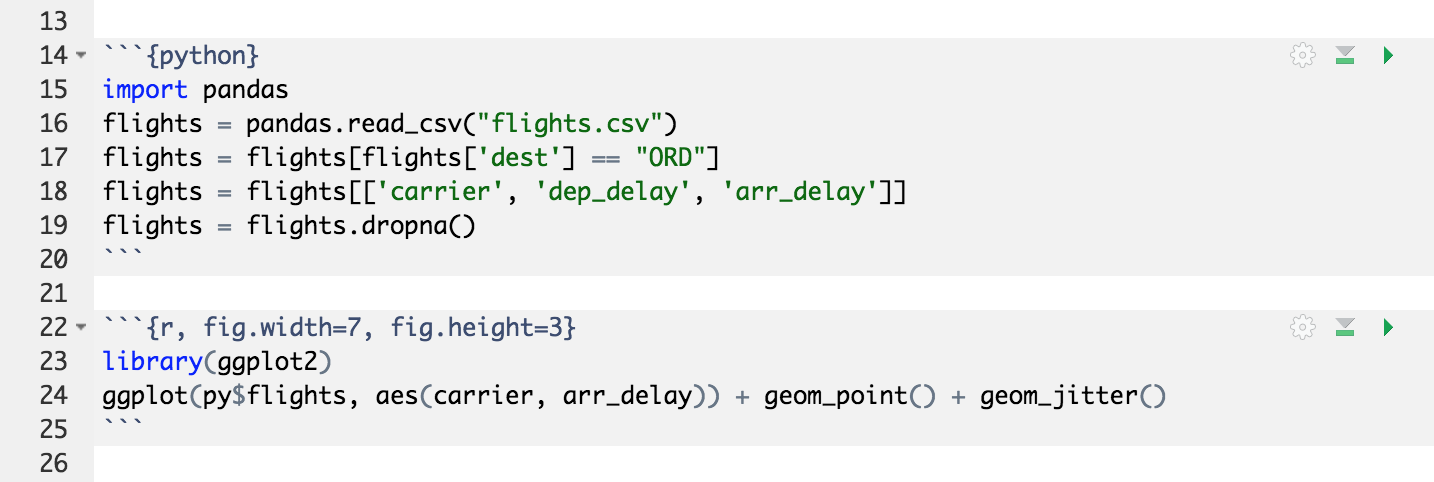

However, there are some cons to using this workflow. That’s essentially it! You can now use this workflow to (mostly) seamlessly switch between R and Python to your heart’s content. If you need to do the opposite, and access something from the Python environment in R, you can call py$object_name. In order to access something from the R environment in a Python chunk, you need to call r. It’s really simple to do (assuming you already have a version of Python installed on the same machine), just create a new chunk and replace the r with python as below, and you’re ready to run! RStudio has the capability to run Python code inside of RMarkdown without needing external libraries. This method should work, but what if you want to do this all in the same notebook to have the ability to go back and forth between R and Python? For this, you can use the reticulate package in R, while not fully robust, does a good job at converting R objects to Python, and vice versa. One way to combine the two languages in your workflow is to do cleaning/exploration/transformation in R, write the results back to a database (or save the data in some other way), and then import the data into Python to build models. Given these main pros of R and Python, is there a way where we can utilize both languages in a project? Definitely!

While there is still a large debate on what to use between R and Python users, many agree that R is superior for data cleaning, exploration, and conducting general statistical analyses, while Python is more capable when it comes to developing and implementing models.

There are already countless articles discussing the pros and cons of both, so I won’t go into too much detail in this post. The topic of whether to choose R or Python for data science work has been debated ad-nauseam.


 0 kommentar(er)
0 kommentar(er)
